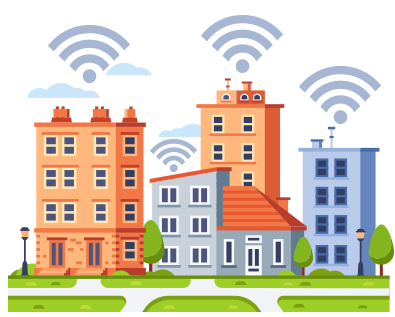Improving Wireless Connectivity and Efficiency in Multi-Dwelling Settings for Maximum Customer Satisfaction
Improving Wireless Connectivity and Efficiency in Multi-Dwelling Settings for Maximum Customer Satisfaction
Blog Article
Within today's world, having a robust and dependable Wireless signal is essential, especially in multi-dwelling settings like flats or condominiums. Numerous individuals rely on the network for employment, education, and entertainment. However, Wireless signals can have difficulty to extend to every area of these structures due to various obstacles. These hindrances can consist of walls, floors, and other electronic devices that interfere with the connection. To improve Wireless signal strength and performance in these environments, it is critical to understand some foundational concepts of Wi-Fi networking.
One effective way to enhance Wi-Fi operation is by strategically positioning gateways and extenders throughout the property. A middle location is usually ideal, as it allows the signal to propagate uniformly in all areas. In spacious multi-unit units, several access points may be necessary. These devices help increase the reach of the wireless infrastructure and provide stronger service to residents in different parts of the building. Additionally, deploying equipment that adhere to the current Wi-Fi protocols can result in higher bandwidth and better total efficiency.
Another important factor in improving wireless connectivity is reducing disruption from other electronics. Most household items, such as ovens and cordless phones, can disrupt wireless signals. It is advisable to position modems away from these devices to maintain a clearer signal. Additionally, adjusting the frequency settings on a device can help minimize conflict from neighboring signals. Most routers automatically choose the most suitable band, but individually choosing a less congested one can improve performance.
Periodically updating router firmware is also crucial for maintaining maximum wireless performance. Manufacturers routinely release updates that resolve bugs great post to read and improve protection features. Keeping the software up-to-date ensures that residents benefit from the latest improvements and protections against potential risks. Furthermore, tracking network activity helps detect which devices consume more resources, allowing for better allocation of existing resources.
Ultimately, educating users about best practices for using Wi-Fi can greatly improve their experience. Basic steps such as pairing only necessary units, employing Ethernet connections when feasible, and routinely rebooting the device can make a difference. By creating a culture that understands how to maximize their Wi-Fi usage, multi-dwelling residences mdus offering free installation can elevate user experience and guarantee that everyone experiences a reliable Wi-Fi connection. This integrated approach of strategic deployment, reducing interference, managing hardware, and educating users will lead to a more reliable and enjoyable wireless experience for all occupants.